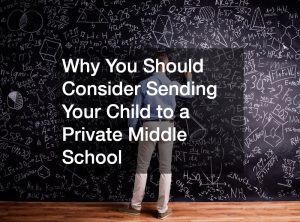If you’re reading this, chances are you’ve undergone at least one form of formal education.
In the past, education was limited to the wealthy to keep the lower classes uneducated. After all, it was easier to rule when the majority of the masses were too illiterate to protest your own logic. By the Middle Ages, quality education was based on how much you could afford for your children. Naturally, sons of merchants, noblemen, and royalty had access to the best teachers, but children of serfs and peasants had no access to formal education.
Today, this is no longer the case. Modern education has become a structured system required and supported by the state in keeping with Plato’s philosophy of education. Education is now a basic right for children in most (if not all) parts of the world. Regardless of parents’ financial status, a child is now required to attend school at a certain age (in the United States, by the age of 6). While there are private schools available for children whose parents can afford it, public schools accommodate students of all backgrounds.
Whether you’ve studied in a public or private school, you’ve experienced formal education. But what exactly does a “formal education” entail? Here’s an overview of how the system generally works.
What Is Formal Learning?
Formal education is a structured and systematic form of learning. This is the education of a certain standard delivered to students by trained teachers. To make sure formal learning is standardized and all learning institutions (e.g. schools, colleges, universities, etc.) comply with these standards, formal education in a country is governed by organizations.
In the case of the US, the Department of Education oversees formal education in all states. However, there are school districts and school boards to oversee schools on a smaller scale to handle problems that may arise in schools that the Department of Education doesn’t necessarily have to handle themselves.
Formal education is classroom-based, meaning everything a student learns comes books and other educational materials with the sole purpose of educating students. All teachers are trained and licensed to teach children, and they’re the same teachers the students will see every day to keep their education and training consistent.
Attendance is mandatory and non-optional for children ages 17 and below. If a child fails to show up to class for several days in a row, they may be considered truant. Because it is mandatory, they may be sent to juvenile centers or counseling. Parents may also be charged if they fail to do their duty as a parent and send their children to school. This can result in fines or other penalties on the parents.
Formal vs. Informal vs. Non-formal
Formal education may be a popular educational method, but it’s not the only one. People (even people who are no longer taking formal education) can still continue to learn through informal and non-formal types of education.
Informal Education
Informal education lacks the structure and standards of formal education. Learning happens outside the classroom, whether in educational locations like museums and libraries or in non-educational locations like at home or in non-educational organizations. And unlike formal education settings, informal education is completely optional.
Non-formal Education
Non-formal learning is a mix of formal and informal. While it doesn’t have a syllabus or curriculum and isn’t necessarily taught by people who are licensed to teach, it’s more structured than informal learning. Examples of non-formal learning are organizations like the Boy or Girl Scouts, non-credit adult education courses, seminars, and conferences.
Levels of Formal Education
The structure of formal education is divided into four types depending on a student’s ability to understand information. At a young age, students learn the basics of general knowledge, and as they reach the end of mandatory formal education, they learn more complex facts. After graduating, they have the option to take further education in a specialized field.
Preschool
Also known as early childhood education, children ages 3 to 6 learn the basics such as reading, writing, counting, and more. While some educational systems in the world require children to attend all levels of preschool, in others, it is not necessary as long as children enter primary school capable of reading and writing.
Primary School
Primary school deals with the first few years of education for children. During this stage, students learn the fundamentals of reading, math, and other basic levels of education. It is also known as grade school.
Secondary School
Secondary school is also known as high school. It is divided into lower secondary education, which deals with more advanced general knowledge on the subjects, and upper secondary education, which starts to focus on education relevant to employment after mandatory education. After graduating, students can opt to find employment with the knowledge they have, or they can seek further education specializing in their field of choice.
Post-secondary School
All optional formal education falls under post-secondary education. These include undergraduate and graduate programs, law school, medical school, vocational school, community college, and more. These are generally provided to help students seek education for specialized fields they want to work in, but some people also choose to attend simply because they are interested in further studies. The highest level of education one can pursue is post-graduate education.
You might notice that you have taken at least one form of formal education in your life. The goal of making formal education mandatory is to ensure that everyone is literate and smart enough to make their own decisions and choose their own field to work in once they become adults. So, if you’re interested in further education or want to know where the formal education path will lead, at least you have a guide on what you can do to make your educational goals happen.
















